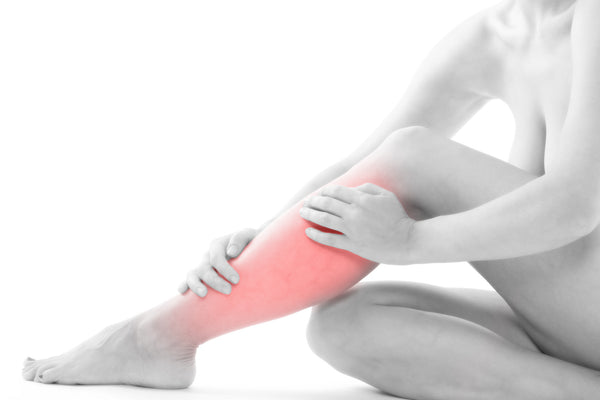- Continue Shopping
- Your Cart is Empty
7 Things You Need to Know About Shin Splints
Most people know them as shin splints, but they are technically referred to as medial tibial stress syndrome (MTSS). Also, shin splints have been incorrectly labeled anterior compartment syndrome. For a full discussion of the terminology and anatomy, Massage Today has an excellent article on these subjects, should you be so inclined. But for our purposes, shin splints are exercise-related pain in the shins, either down the front of the leg or down the inside of the leg. It may be caused by an irritation of the tendons and muscles near the shin bones. This injury is most often seen among runners and can be extremely painful.

Of course, most runners really don’t care about the technical aspects of shin splints; they want to know how to get rid of them and not have them come back! So, let’s look at 7 things you need to know about shin splints.
- It’s easier to not get shin splints than it is to get rid of them! You remember that old say, “An ounce of prevention is worth a pound of cure?” It is very true of shin splints. Using proper footwear, strengthening the foot and lower leg, stretching, and doing some specific drills can keep you shin splints-free (more about those later.). But, if you ignore this warning and get shin splints, what do you do next?
- The best news is that in most cases shin splints hurt a lot more than do damage. Only in very rare cases (usually in women) do they lead to stress fractures. The bad news is that shin splints can be chronic and take a very long time to heal. The treatment at the onset of shin splints is to discontinue running (possibly substituting the elliptical trainer, cycling etc.), ice, and judiciously use anti-inflammatories such as ibuprofen. If possible, do not attempt to return to running before the inflammation goes away. Initially, a trip to the doctor is not usually necessary, as self-diagnosis is pretty straightforward.
- Before returning to running, it is very important to figure out what caused the shin splints in the first place. Generally, runners with a structural imbalance or irregularity, such as foot placement (usually overpronation or underpronation), are predisposed to shin splints. With overpronation, the runner’s foot flattens out causing a pulling in the shin area. With underpronation, there is insufficient shock absorption because of a more rigid foot, causing more stress to the shin area. Other causes of shin splints include an imbalance between the calf muscles and the shin muscles, too many miles on hard surfaces, and running in inappropriate footwear, especially track spikes.
- Once the cause has been identified, a trip to a running specialty store for new shoes may be in order, as well as the purchase of some shoe inserts to correct structural imbalances and support the foot. For more on shoes, check out our article, If the Shoe Fits..., and for much more on supports we have What's in a name? A Primer on Inserts, Orthotics, and Arch Supports and 7 Points of Foot Support. Once you have the footwear and foot support aspects figured out, you then need to work on the leg and foot.
- Assuming you don’t have an “A” race or a key track meet scheduled this weekend, it is best to not try to run until the pain and inflammation are resolved. Once that has been achieved, I recommend the following protocol:
- Do “Charlie Chaplin” or foot drills daily before running. They are so named because you will resemble the “Little Tramp” while doing them. An excellent resource explaining these drills can be found at org. These drills are amazingly effective when done CONSISTENTLY, including before you get shin splints and after they go away.
- Do calf stretching. I recommend doing both the standard heel-drop Achilles stretch, as well as doing the heel-drop stretch and then slowly moving the knee forward to stretch the rest of the calf muscles. I find using stairs or a curb to be the most effective, though some like to use a ProStretch
- Those people who are prone to shin splints are also the same ones who seem to be predisposed to Plantar Fasciitis. So now would be a good time to integrate rolling a golf ball 20 minutes each day with each foot. This technique massages out the knots in the fascia and helps to prevent plantar fasciitis. Again, better to not get it than to have to get rid of it.
- Wear compression socks or calf sleeves. These are garments that are tightly woven and provide support to the shins and calves. They are not a cure-all, but do provide some relief and help with inflammation. There are many brands of compression wear now, but I am somewhat partial to the SLS3
- Reintroduce running gradually. Don’t try to push through the pain. If possible, try to train on softer surfaces, such as trails, for a while. A good, conservative protocol to begin activity again can be found at Return to Running. Also, check out our 4-part series on returning to running after a long layoff at The Long Road Back.
For more informative articles, check out our blog page at Stridetek.com, as well subscribe to our monthly newsletter. Articles are posted there regularly on a variety of topics. Also, our popular half-marathon training article and training plan are available at StrideTek Half-Marathon Training Plan.
